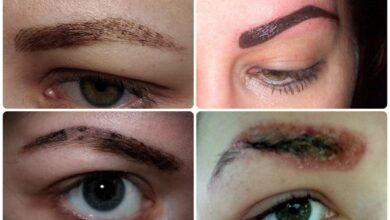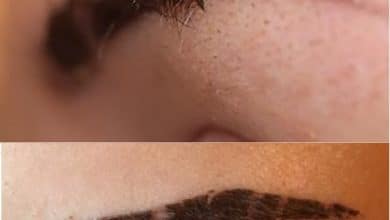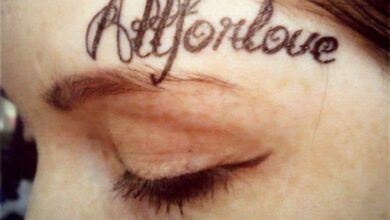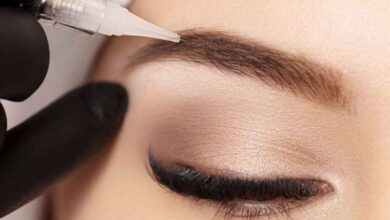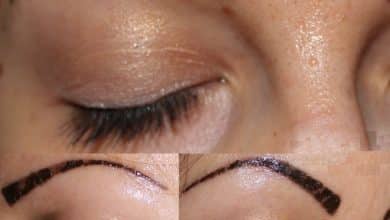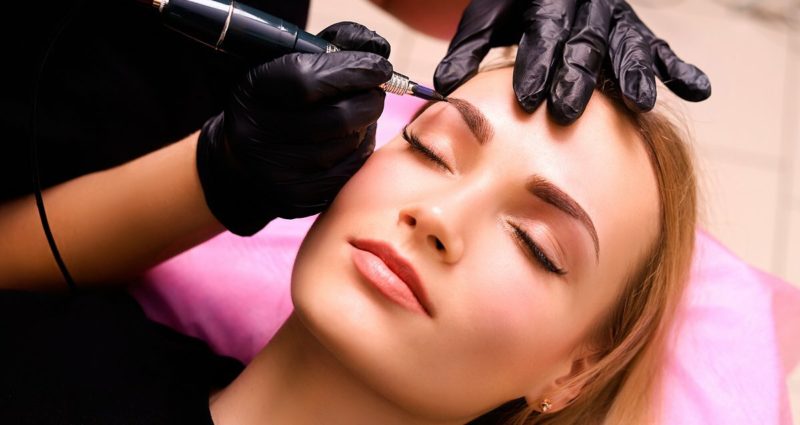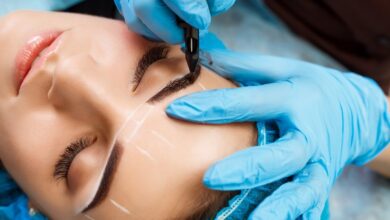Best way to fade eyebrow tattoo

Getting your eyebrows tattooed can be a game changer—until it isn’t. Whether the shape didn’t suit your face, the color has turned an unflattering orange or grey, or the trend simply no longer aligns with your aesthetic, eyebrow tattoo removal is a growing solution for thousands seeking a fresh start.
Thanks to advancements in laser technology and deeper knowledge of cosmetic pigments, the process of removing brow tattoos is safer and more effective than ever. But it isn’t always simple. From laser types to pigment challenges and real-world case outcomes, here’s what you need to know before booking your first removal session.
What Is Eyebrow Tattoo Removal?
Eyebrow tattoo removal is a professional treatment that targets and breaks down the pigments implanted into the skin during procedures like microblading or traditional brow tattooing. While these techniques are meant to be long-lasting, they’re not always permanent—and with the right method, the pigment can be safely faded or erased.
Unlike regular body tattoos, cosmetic brow pigments come with their own set of complications. Some inks oxidize and change color under laser treatment, while others resist fading entirely due to chemical composition or depth of application.
How Does Eyebrow Tattoo Removal Work?
The most commonly used method is laser removal—specifically with PicoWay or Q-switched technology. These lasers emit rapid, ultra-short bursts of energy that penetrate the skin and shatter ink particles into microscopic fragments. Once broken down, the body’s immune system gradually flushes out the pigment.
PicoWay uses picosecond pulses (one-trillionth of a second) and relies on sound rather than heat. This means less damage to surrounding tissue, faster healing, and reduced risk of scarring. It’s especially effective on delicate areas like the eyebrows.
Can You Fade an Eyebrow Tattoo at Home?
Yes, you can gradually fade your eyebrow tattoo at home using natural exfoliants and skincare treatments. However, full removal is challenging and often requires professional intervention. Before trying any method, ensure that your skin is fully healed from the initial tattooing procedure, typically 4-6 weeks after treatment.
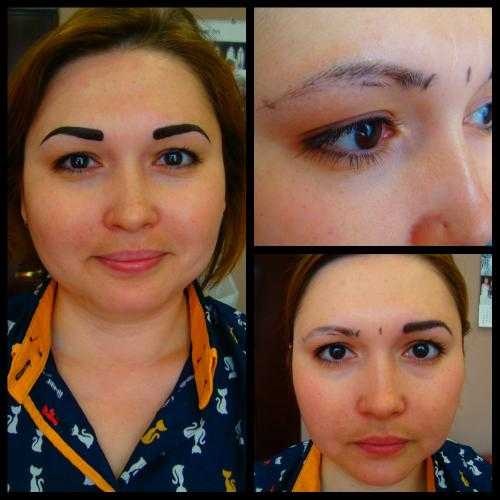
Best At-Home Methods to Fade an Eyebrow Tattoo
1. Glycolic Acid Peels
Glycolic acid is a powerful chemical exfoliant that helps remove dead skin cells and lighten pigment over time.
- Use a 10-15% glycolic acid peel on your brows 2-3 times per week.
- Apply with a cotton pad, let sit for a few minutes, then rinse with lukewarm water.
- Always do a patch test before use.
- Pros: Effective exfoliation, speeds up natural fading.
- Cons: Can cause irritation, may take weeks to show visible results.
2. Sea Salt Scrubs
Sea salt is a natural exfoliant that can help remove pigment from the skin.
- Mix crushed sea salt with lukewarm water.
- Gently massage your brows in circular motions for a few minutes.
- Rinse thoroughly and moisturize afterward.
- Avoid excessive scrubbing to prevent irritation.
- Pros: Easily accessible, gentle exfoliation.
- Cons: Can cause dryness and sensitivity if overused.
3. Retinol or Retinoid Creams
Retinol speeds up skin cell turnover, promoting pigment fading.
- Apply a retinol-based cream nightly.
- Expect gradual lightening over several weeks to months.
- Avoid excessive use to prevent dryness or peeling.
- Pros: Scientifically proven to enhance skin renewal.
- Cons: Takes time, can cause mild peeling.
4. Hydrogen Peroxide Paste
A mix of hydrogen peroxide and baking soda can help fade pigment.
- Mix 3% hydrogen peroxide with baking soda into a paste.
- Apply with a cotton swab and leave on for 10 minutes.
- Rinse and repeat 2-3 times per week.
- Pros: Affordable and effective for early-stage fading.
- Cons: Can irritate skin, may not work for deeper pigments.
5. Rosehip Seed Oil
Rosehip oil is known for its natural skin-repairing properties.
- Apply 1-2 drops on each brow and massage gently.
- Use 3 times daily for at least two weeks.
- Pros: Nourishes skin while fading pigments.
- Cons: Slow process, results vary.
6. Lemon Juice Treatment
Lemon juice is a natural skin lightener that can help fade pigments.
- Apply fresh lemon juice on your brows using a cotton pad.
- Leave for 5-10 minutes, then rinse.
- Repeat 2-3 times per week (avoid if you have sensitive skin).
- Pros: Natural and easily accessible.
- Cons: Can cause irritation, not suitable for sensitive skin.
7. Warm Showers & Sweating
Heat and moisture can accelerate pigment breakdown.
- Take warm showers twice daily and massage your brows.
- Engage in high-intensity workouts to induce sweating.
- Visit a sauna 3 times per week for extra effectiveness.
- Pros: Safe and natural.
- Cons: Results take longer.
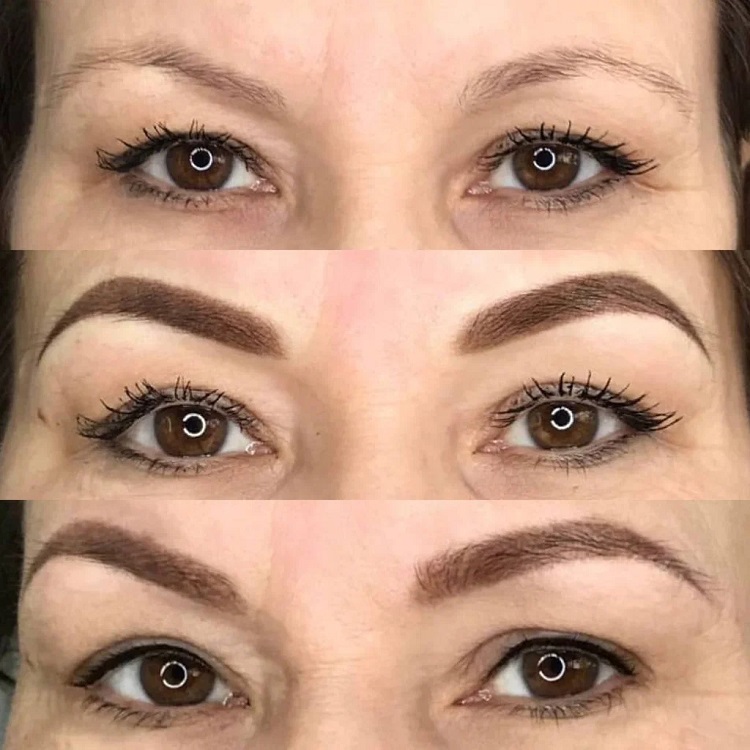
Microblading vs. Traditional Eyebrow Tattoo: What’s Harder to Remove?
Different tattooing methods affect how well removal works. Microblading and traditional tattoos penetrate the skin at different depths and use different pigments.
| Feature | Microblading | Traditional Tattoo |
|---|---|---|
| Ink Depth | Shallow (epidermis) | Deep (dermis) |
| Removal Difficulty | Easier, fewer sessions | Harder, more sessions |
| Risk of Scarring | Low | Moderate to high |
| Common Issues | Orange fading, blurred strokes | Grey/green discoloration |
Microblading is often easier to fade since the pigment sits closer to the surface. However, it can still be tricky—especially if the artist went too deep or used low-quality pigments.
Real-World Case Highlights
These documented examples illustrate how different eyebrow tattoos respond to removal:
Case 1
A client with 2-year-old microbladed brows experienced 60% fading after one PicoWay session. The pigment was light brown and superficial, making it ideal for treatment.
Case 2
Another client with a 12-year-old tattoo, applied with traditional body tattoo techniques, required 17 sessions over 3 years. The ink was black but had turned greenish-grey with age and layering, complicating the process significantly.
Case 3
A woman who had her brows tattooed in Thailand saw no improvement after three laser sessions. The pigment did not oxidize or lighten, indicating non-standard ink likely unrecognized by the laser.
Case 4
A newer tattoo done only one year earlier by a reputable local artist failed to respond well due to overly deep application. The client had visible microblading scars and persistent pigment despite multiple treatments.
Case 5
Inks containing iron oxide were shown to cause a dramatic paradoxical darkening effect after the second session. One patient’s brows turned permanently black, making further removal virtually impossible.
What to Expect: The Eyebrow Tattoo Removal Process
Consultation
You’ll begin with an in-person consultation. The specialist will evaluate your skin type, tattoo depth, and ink composition. A test patch may be done to observe how your pigment reacts.
Procedure
The technician will clean your skin, apply a numbing cream, and use protective eyewear. The laser device is passed over the brow area, emitting short pulses. Most sessions take 15 to 30 minutes.
Pain Level
Patients describe the sensation as similar to a rubber band snapping on the skin. Discomfort is typically manageable with topical anesthetic.
Healing and Aftercare
Immediately post-treatment, the skin may feel sore, swollen, or red. You may also notice minor blistering or scabbing. Follow these aftercare tips:
- Apply a cold compress for the first few hours
- Avoid sun exposure or tanning
- Use a healing gel like Laser Enzyme Gel
- Don’t pick scabs or peel the skin
- Refrain from applying makeup until fully healed
Full recovery usually takes 2–4 weeks between sessions.
Professional Eyebrow Tattoo Removal Options
If at-home methods aren’t effective, professional treatments offer faster and more reliable fading.
1. Saline Tattoo Removal
Saline solution is applied to the tattooed area to lift pigments naturally.
- Less invasive than laser removal.
- Requires multiple sessions.
- Minimal risk of scarring when done by an expert.
2. Laser Tattoo Removal
Laser treatments break down ink particles, allowing the body to remove them naturally.
- Best for dark, stubborn pigments.
- Requires 4-8 sessions.
- Can be painful and expensive.
3. Chemical Peels & Microdermabrasion
These exfoliating treatments help remove the top layers of skin.
- Chemical peels use TCA or glycolic acid.
- Microdermabrasion sands away dead skin layers.
- Safe when performed by professionals.
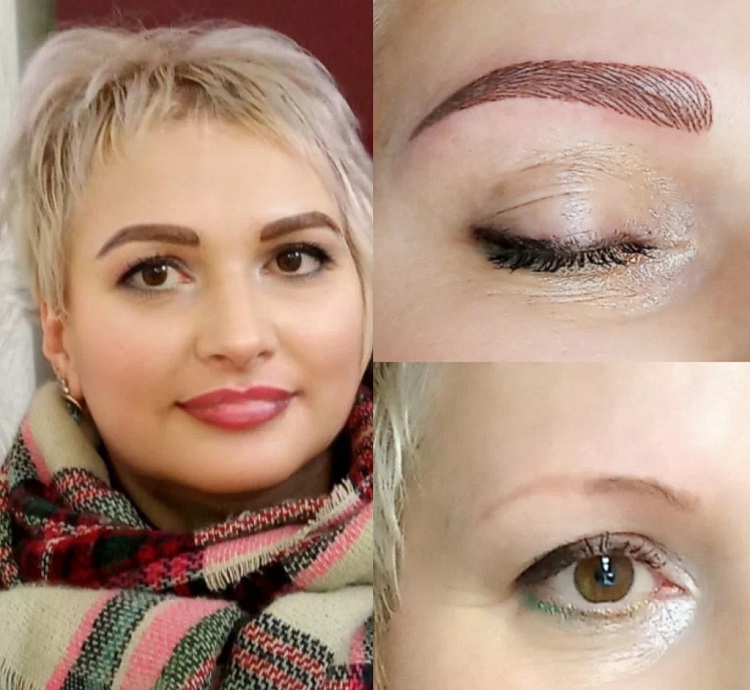
How Long Does It Take for an Eyebrow Tattoo to Fade?
- Without intervention, microblading and eyebrow tattoos fade naturally within 6-24 months.
- With at-home methods, fading can occur within 4-12 weeks.
- Professional removal can take multiple sessions over several months.
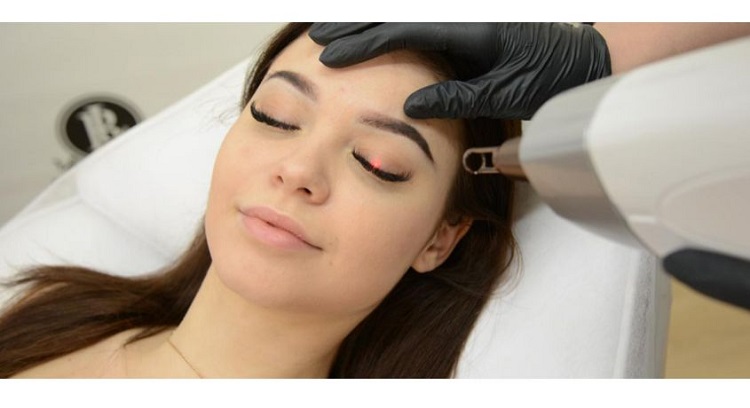
Why Some Eyebrow Tattoos Are Harder to Remove
Not all eyebrow tattoos respond the same to removal. Based on hundreds of clinical cases, several factors can complicate the process:
Pigment Type
Iron-oxide pigments are commonly used in cosmetic tattoos. These pigments can oxidize under laser light, turning orange, red, or even black. Once darkened, they can become nearly impossible to remove.
Age of Tattoo
Newer tattoos (1–3 years old) are usually easier to remove, with some fading after just 1–2 sessions. Older tattoos (10+ years) may require over 10 sessions due to deeper pigment saturation and layering.
Depth of Ink
When pigment is placed too deeply into the dermis, the body struggles to break it down—even with laser assistance. Improper technique can trap pigment permanently under the skin.
Foreign Pigments
Tattoos performed in unregulated environments—especially overseas—often use inks that lasers don’t recognize. These formulations resist treatment and can sometimes cause chemical reactions that worsen the discoloration.
Paradoxical Darkening
In some cases, the first laser session lightens the brows, only for a second session to trigger a chemical reaction that turns them black. This phenomenon is especially common when iron or unknown metal compounds are present in the ink.
How Much Does Eyebrow Tattoo Removal Cost?
Pricing varies depending on the method used, tattoo complexity, and clinic location. Here’s an overview:
| Removal Method | Cost per Session | Typical Total Cost |
|---|---|---|
| Laser (PicoWay) | $200–$500 | $800–$3000 |
| Saline Removal | $100–$250 | $500–$1500 |
| Dermabrasion | $150–$300 | Varies |
| Surgical Excision | $500–$1000 | One-time procedure |
Laser removal is the most popular and most effective, but also the most expensive. Some clinics offer free consultations and payment plans to make it more accessible.
Before & After Results: Managing Expectations
Not every tattoo disappears entirely. Success depends on:
- Age of the tattoo
- Ink composition
- Number of layers applied
- Client’s skin tone and health
- Technician expertise and laser type
While many clients achieve 80–100% clearance, some may only experience partial fading. Others may need additional cosmetic corrections (such as new microblading) once the old pigment fades enough.
Frequently Asked Questions
Can all brow tattoos be removed?
Most can be significantly faded, but not all are fully removable—especially those with heavy pigment saturation or unknown inks.
Is it safe?
Yes, when performed by trained professionals using FDA-cleared lasers like PicoWay. Risk of scarring is low with proper technique.
Will it affect my natural brow hair?
No. The laser targets pigment in the skin and does not damage hair follicles.
Does insurance cover it?
Eyebrow tattoo removal is considered a cosmetic procedure and is not typically covered by insurance.
What about home removal kits?
At-home removal creams and laser pens are largely ineffective and can cause skin burns or scarring. Professional treatment is strongly recommended.
TAKEAWAY
Eyebrow tattoo removal is a precise and evolving art that requires the right combination of technology, technique, and professional experience. While many achieve clear, natural-looking results, the path isn’t always easy or predictable. The best outcomes come from well-informed clients who take the time to understand their unique skin and pigment situation.
If you’re unhappy with your brow tattoos, don’t settle. Book a consultation with a certified removal specialist and take the first step toward the look you really want—clean, confident, and truly you.
Conclusion
Fading an eyebrow tattoo requires patience and consistency. Whether using at-home methods like exfoliation and oils or professional treatments like saline removal or laser therapy, choosing the right method for your skin type is essential.
Need professional advice? Consult a certified technician for a personalized removal plan tailored to your needs!


